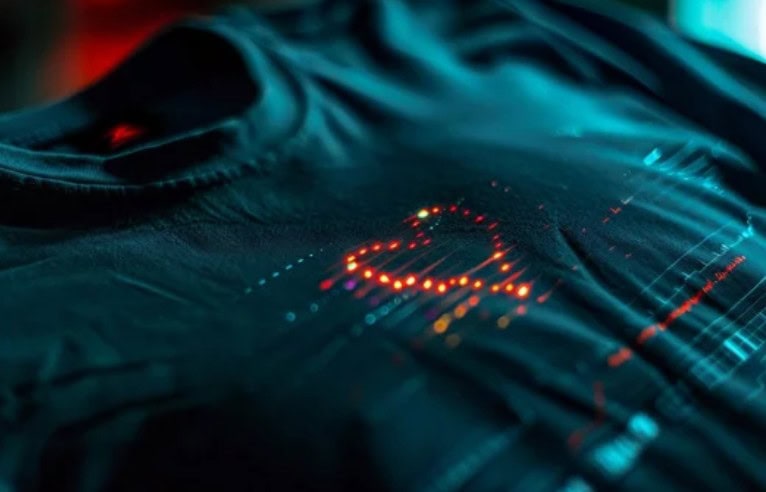Luma Wire Tech delivers fine wires for technical textiles, enabling innovations in e-textiles, protective gear, and high-performance smart fabrics. By combining tungsten’s strength with gold plating, our wires provide conductivity, flexibility, and durability—core properties that define the future of technical textiles.
Technical textiles are specialized materials designed primarily for their functional and performance characteristics rather than for aesthetic purposes. This rapidly expanding sector encompasses a diverse array of applications, supporting industries such as automotive, medical, construction, agriculture, and protective equipment. Globally, the technical textiles market is growing at approximately 4% annually, with the United States leading production and consumption (23% market share), followed by Western Europe (22%), China (13%), Japan (7%), and India (4–5%).
One of the notable innovations in technical textiles is the incorporation of Tungsten wires with gold plating, particularly in diameters ranging from 25 to 50 microns. Gold-plated tungsten wires are a cornerstone of modern technical textiles, offering conductivity and durability for smart clothing, medical monitoring garments, and security applications. These materials are used across various technical textile applications, including:

Ulrik Palmqvist, Ph.D.
You are welcome to contact me when you need professional assistance
Various techniques are employed in the production of technical textiles incorporating Tungsten wires, including:
Applications of technical textiles with tungsten and gold-plated wires span across healthcare, fashion, sports, aerospace, and protective equipment. These advanced fabrics rely on conductive fine wires to achieve functionality that traditional textiles cannot deliver.
The future of technical textiles is promising, driven by advancements in material science, electronics, and manufacturing techniques. The demand for e-textiles is expected to rise significantly as industries increasingly prioritize multifunctional and sustainable solutions. Key trends include:
As the technical textiles industry evolves, the fusion of advanced materials like tungsten and gold-plated wires with cutting-edge manufacturing techniques will continue to drive innovation, reshaping industries and opening new frontiers for multifunctional fabrics.
Source for parts of the description: https://www.sciencedirect.com/science/article/abs/pii/B9780128192467000097

Every stitch of progress in technical textiles depends on the right materials. Behind smart garments, protective gear, and high-performance fabrics lies one critical component: fine wires that must never fail. That’s why leading manufacturers worldwide turn to Luma Wire Tech
Proven Expertise in Ultra-Fine Wires
With more than 90 years of experience, Luma is one of the few companies globally capable of producing gold-plated tungsten wires below 10 microns. This capability ensures maximum conductivity and flexibility for advanced e-textiles.
Superior Surface Finish
Our wires feature an exceptionally smooth and consistent surface finish, minimizing micro-cracks and enabling reliable integration into delicate textile structures. This level of precision supports long-term durability even under repeated stress.
Tailored Engineering for Each Application
From protective gloves to smart medical garments, every project comes with unique requirements. Luma collaborates closely with manufacturers to customize wire diameter, plating, and coatings—ensuring that each technical textile application achieves its intended functionality.
Certified Quality and Sustainability
Produced in Sweden under strict ESG principles, our wires comply with ISO standards. Manufacturers gain full traceability and the assurance that every spool meets international benchmarks for safety and performance.
Global Partner for Innovation
Whether supporting e-textile start-ups or large-scale protective fabric manufacturers, Luma provides not only material but also technical support. Our fine wire technical expertise helps shorten development cycles, reduce costs, and accelerate time-to-market.
By choosing Luma Wire Tech, manufacturers secure a partner that transforms ambitious concepts in technical textiles into reliable, high-performing solutions.
What are technical textiles?
Technical textiles are fabrics designed for performance and function rather than aesthetics. They include applications such as e-textiles, protective clothing, aerospace materials, and medical monitoring garments.
Why are tungsten and gold-plated wires important in technical textiles?
Tungsten and gold-plated wires provide conductivity, durability, and thermal resistance. In technical textiles, they enable smart fabrics for healthcare, sportswear, and protective equipment that must endure extreme conditions.
How do fine wires enhance e-textiles?
In e-textiles, fine wires act as conductive pathways that allow integration of sensors, LEDs, and batteries into fabrics. This makes technical textiles responsive, enabling real-time health monitoring and performance tracking.
What industries benefit most from technical textiles with fine wires?
Industries such as healthcare, aerospace, automotive, defense, and fashion benefit from technical textiles. Conductive fine wires expand the functionality of fabrics, from patient-monitoring garments to astronaut suits and high-protection gear.
Is Luma Wire Tech ISO certified for technical textile wire production?
Yes. Luma Wire Tech manufactures wires for technical textiles under strict quality systems and is certified according to ISO 9001
. For medical applications, we also comply with ISO 13485
, ensuring traceability and international compliance.
Copyright © Luma Wire Tech 2018
Powered by: Aditor.se